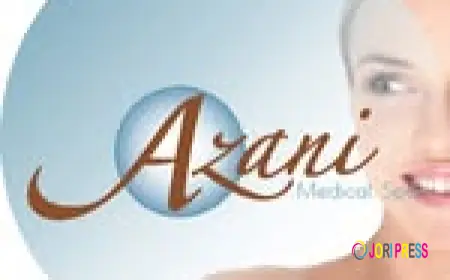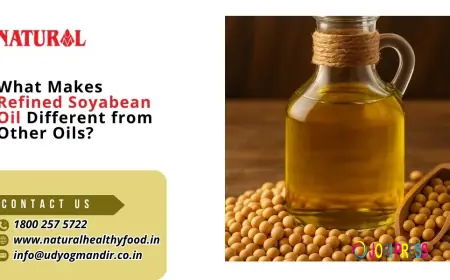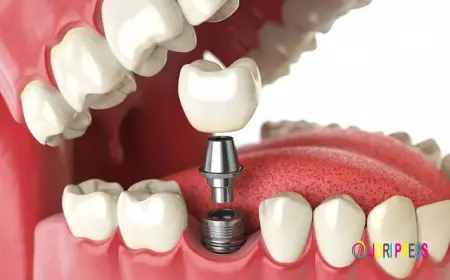India Titanium Dioxide Market Size and Growth: A Deep Dive into Key Sectors
India Titanium Dioxide Market Size and Growth: A Deep Dive into Key Sectors
India Titanium Dioxide Market: Comprehensive Analysis (2024–2030)
Executive Summary
The India Titanium Dioxide Market is experiencing remarkable growth, having reached a total market volume of 2,456.32 thousand metric tonnes in 2024. The market is projected to expand at a Compound Annual Growth Rate (CAGR) of 4.06% through 2030. Titanium dioxide (TiO₂) is a versatile white pigment that plays a pivotal role across multiple industries, including paints and coatings, plastics, cosmetics, textiles, and automotive. The sustained demand is fueled by advancements in production technology, expansion in downstream industries, and increasing emphasis on environmental sustainability.
TiO₂’s high refractive index, brightness, and UV resistance make it an indispensable ingredient in industrial and consumer products. It enhances the aesthetic and functional properties of paints, coatings, and plastics while serving as a key ingredient in cosmetics for sun protection and pigmentation. The market’s growth is further reinforced by India’s expanding industrial base, infrastructural development, and urbanization trends.
Technological innovation underpins the market’s expansion, improving production efficiency, product quality, and environmental compliance. Companies adopting modern chloride-based production processes benefit from higher scalability, lower energy consumption, and reduced environmental footprint. As a result, titanium dioxide remains strategically important in India’s chemical, industrial, and consumer markets.
???????? ??? ?????? ??????:-
https://www.techsciresearch.com/sample-report.aspx?cid=19935
Introduction to Titanium Dioxide
Titanium dioxide is a naturally occurring oxide of titanium, widely recognized for its white pigmentation properties, opacity, and UV light absorption. Its versatility allows it to function in numerous industrial applications, from imparting whiteness and brightness in paints and coatings to enhancing durability and UV resistance in plastics. The India Titanium Dioxide Market has expanded in response to growing industrialization, technological advancement, and increasing product applications across various sectors.
The production of TiO₂ primarily involves two processes: the sulfate process and the chloride process. The sulfate process has been historically prevalent but involves higher chemical waste and environmental impact. The chloride process, increasingly preferred in India, offers improved efficiency, scalability, and reduced environmental footprint. This technological evolution has enabled manufacturers to meet growing demand sustainably, while also adhering to stricter environmental regulations.
In addition to manufacturing methods, the functional properties of titanium dioxide make it critical across multiple industries. Its ability to improve opacity, whiteness, and UV protection makes it a key ingredient in high-performance paints, coatings, plastics, textiles, and cosmetics. Its growth in India is closely tied to industrial expansion, innovation in product development, and sustainability considerations.
Industry Key Drivers
The growth of the India Titanium Dioxide Market is driven by multiple factors. One of the primary growth drivers is the expansion of the paints and coatings industry. As India undergoes rapid urbanization and infrastructure development, demand for high-quality paints and coatings has increased. Titanium dioxide contributes to the opacity, brightness, and UV resistance of these products, making it a vital component in industrial, decorative, and protective coatings.
The plastics industry also fuels demand for TiO₂. Its ability to provide color, opacity, and UV resistance enhances the durability and aesthetics of plastic products. Technological advancements in extrusion, compounding, and blending processes have improved the dispersion and performance of TiO₂ in plastic materials. The growing need for high-quality, UV-stable, and eco-friendly plastics aligns with this demand.
The cosmetics and personal care sector relies on titanium dioxide for pigmentation, sun protection, and opacity. With the rising preference for mineral-based and natural formulations, TiO₂ serves as a safe and effective ingredient. In textiles, it is used to enhance UV protection in fabrics, while in the automotive sector, it improves paint durability, color stability, and resistance to environmental stressors. The cumulative impact of these industries ensures sustained growth for the India Titanium Dioxide Market.
Segmental Analysis: Ingredient Insights
By Grade
The market is primarily divided into rutile and anatase grades. Rutile grade is preferred for applications requiring high brightness, durability, and weather resistance. It is widely used in paints, coatings, and plastics due to its high refractive index and strong UV absorption. Rutile TiO₂ ensures long-lasting performance and visual appeal in industrial and consumer products.
Anatase grade offers photocatalytic properties, making it suitable for self-cleaning surfaces, environmental purification applications, and specialized cosmetic products. While it is less prevalent in high-performance industrial applications compared to rutile, anatase provides unique functional benefits where chemical reactivity and surface interactions are critical.
By Production Process
The chloride process has emerged as the dominant production method in India. It offers higher efficiency, lower energy consumption, and reduced chemical waste. This process produces high-purity TiO₂ suitable for large-scale industrial applications. The sulfate process, although still in use, is gradually being phased out due to its higher environmental impact and lower scalability. Manufacturers adopting chloride-based processes are better positioned to meet rising domestic and global demand, maintain competitiveness, and comply with environmental regulations.
By Application
Titanium dioxide applications are diverse. In paints and coatings, it ensures opacity, brightness, and UV protection. Plastics benefit from TiO₂ for color, opacity, and UV stability, particularly in outdoor and high-performance products. The cosmetics and personal care industry utilizes TiO₂ for pigmentation and sun protection. In textiles, TiO₂ improves UV resistance in fabrics, while automotive applications leverage its properties for color stability and durability against environmental stressors.
Regional Insights
The India Titanium Dioxide Market shows notable regional variations, with Southern India emerging as the dominant market in 2024. This prominence is driven by the presence of well-developed industrial hubs in states such as Tamil Nadu, Andhra Pradesh, and Karnataka. These regions host extensive chemical, textile, automotive, and paint industries, which are major consumers of TiO₂. The industrial infrastructure, combined with proximity to ports for raw material import and finished product export, contributes to a competitive advantage.
Eastern and Western India are also experiencing steady growth, supported by expanding manufacturing facilities, infrastructure development, and government initiatives promoting industrial investment. Regions with concentrated industrial activity, such as Maharashtra and Gujarat, contribute significantly to overall consumption. These regions are witnessing increased adoption of chloride-based TiO₂ production processes, driven by the need for efficient and environmentally compliant manufacturing.
Northern India, though comparatively smaller in market share, is experiencing gradual growth due to the expansion of downstream industries, including paints, plastics, and textiles. The collective growth across these regions highlights the increasing penetration of titanium dioxide in India’s industrial and consumer applications. Regional dynamics, combined with strategic investments and technological advancements, ensure that the market remains robust across the country.
Technological Advancements in Production
Technological innovation is central to the growth of the India Titanium Dioxide Market. Modern production techniques, especially the chloride process, have improved operational efficiency, product quality, and environmental compliance. This process involves converting titanium ore into high-purity TiO₂ using chlorine gas, reducing chemical waste and energy consumption compared to traditional sulfate methods. The improved scalability of the chloride process enables manufacturers to meet growing domestic and export demand effectively.
Process optimization and automation have also enhanced production consistency and reduced operational risks. Advanced filtration, particle size control, and surface treatment techniques ensure that TiO₂ meets the stringent quality standards required for applications in paints, plastics, cosmetics, and textiles. Manufacturers continuously invest in research and development to refine these production techniques, improve energy efficiency, and lower carbon emissions.
Furthermore, technological advancements have expanded the applicability of titanium dioxide across industries. Improved particle dispersion and surface treatment enhance TiO₂’s performance in coatings, plastics, and personal care products. These innovations not only increase product efficiency but also align with India’s commitment to sustainable industrial practices. By integrating technology into production, companies ensure that titanium dioxide remains a high-performance, environmentally responsible ingredient.
Sustainability Initiatives
Sustainability has become a critical factor influencing the India Titanium Dioxide Market. Manufacturers are adopting greener production methods, reducing chemical waste, and optimizing energy consumption. Chloride-based production processes inherently produce fewer effluents than the sulfate process, supporting environmental compliance and corporate sustainability goals.
Industries consuming titanium dioxide, such as paints, plastics, and textiles, are also focusing on eco-friendly formulations. Low-VOC paints, biodegradable plastics, and UV-protective textiles containing TiO₂ contribute to reducing environmental impact while meeting consumer demand for sustainable products. Companies investing in these sustainable applications are not only complying with regulations but also capturing market share among environmentally conscious consumers.
In addition, research on recycling and repurposing TiO₂-containing materials is gaining attention. By recovering titanium dioxide from industrial waste or end-of-life products, companies can reduce raw material dependency, minimize environmental footprint, and support circular economy initiatives. These sustainability measures collectively strengthen the long-term growth potential of the India Titanium Dioxide Market.
Regulatory Landscape
The India Titanium Dioxide Market operates within a regulatory framework designed to ensure environmental safety and industrial compliance. Government policies on chemical manufacturing, emissions control, and waste management significantly influence production processes and operational costs. Compliance with environmental norms is critical for both domestic producers and multinational companies operating in India.
Regulations also affect the development of new TiO₂ applications. For instance, cosmetics and personal care products are subject to stringent safety standards, requiring titanium dioxide used in these products to meet defined purity and particle size criteria. Similarly, paints and coatings industries adhere to low-VOC standards, which necessitate the use of high-quality, environmentally friendly titanium dioxide.
The regulatory environment encourages innovation by pushing companies toward cleaner production methods, sustainable applications, and responsible usage. Firms investing in compliance, technology, and sustainability gain a competitive edge, ensuring their long-term presence in the Indian market.
Competitive Landscape
The India Titanium Dioxide Market is highly competitive, with a mix of domestic and international players. Key companies include Travancore Titanium Products Ltd., Chemours India Pvt Ltd., Meghmani Organics Limited, Kerala Minerals & Metals Limited, and Venator Materials PLC. These companies compete based on product quality, technological innovation, production capacity, and sustainability measures.
Strategic initiatives such as capacity expansion, joint ventures, research and development investments, and modernization of production facilities are common among market leaders. By leveraging advanced chloride-based production technologies and sustainable practices, companies optimize efficiency while meeting growing demand from various industries. The competitive landscape is dynamic, with continuous innovations shaping the market and driving growth across paints, coatings, plastics, cosmetics, and textiles.
Future Outlook
The future of the India Titanium Dioxide Market is promising, with consistent growth projected through 2030. The increasing industrial demand, coupled with technological advancements and sustainability initiatives, supports a steady CAGR of 4.06%. Paints, plastics, cosmetics, textiles, and automotive sectors will continue to drive market expansion, while innovative applications and eco-friendly formulations further enhance opportunities.
Emerging trends such as high-performance TiO₂ grades, photocatalytic coatings, and recycled TiO₂ applications are expected to create new market segments. Companies focusing on research, quality assurance, and sustainable production will likely capture a larger market share. Additionally, regional development, particularly in Southern India, will reinforce India’s position as a key player in the global titanium dioxide industry.
???????? ??? ?????? ??????:-
https://www.techsciresearch.com/sample-report.aspx?cid=19935
Contact
TechSci Research LLC
420 Lexington Avenue, Suite 300,
New York, United States- 10170
Tel: +1-332-258-6602
Email: [email protected]
Website: www.techsciresearch.com
FAQ
Q1. What is driving the growth of the India Titanium Dioxide Market?
Answer: Growth is driven by industrial expansion in paints, coatings, plastics, cosmetics, textiles, and automotive sectors, along with technological advancements in TiO₂ production.
Q2. Which production process is most widely used in India?
Answer: The chloride process is dominant due to higher efficiency, scalability, and lower environmental impact compared to the sulfate process.
Q3. What are the main grades of titanium dioxide used in India?
Answer: Rutile and anatase are the primary grades. Rutile is preferred for durability and opacity, while anatase is used in photocatalytic and specialized applications.
Q4. Which region leads the market in India?
Answer: Southern India leads due to industrial hubs in Tamil Nadu, Andhra Pradesh, and Karnataka, which consume significant quantities of titanium dioxide.
Q5. Who are the major players in the market?
Answer: Travancore Titanium Products Ltd., Chemours India Pvt Ltd., Meghmani Organics Limited, Kerala Minerals & Metals Limited, and Venator Materials PLC.
Q6. How is sustainability influencing the market?
Answer: Companies are adopting greener production methods, low-VOC formulations, and recycling initiatives, which reduce environmental impact and support long-term growth.
What's Your Reaction?
 Like
0
Like
0
 Dislike
0
Dislike
0
 Love
0
Love
0
 Funny
0
Funny
0
 Angry
0
Angry
0
 Sad
0
Sad
0
 Wow
0
Wow
0


















































